This is the second part of a Market Outlook for 2021 for both the Powder Bed Fusion and Multi Jet Fusion technologies. The first part can be found here. The idea is to give you a good overview of what is happening in this market right now.
Systems
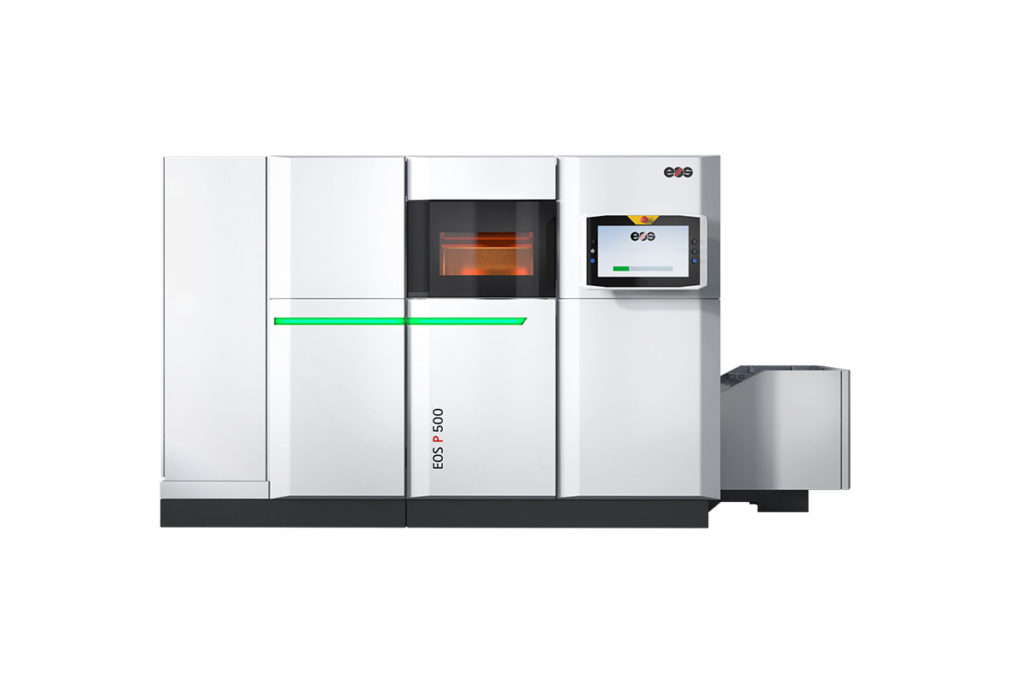
Adoption of large volume sintering systems, such as the EOS P500, is growing, but interest in large systems is significantly less than is the case for metals. More ancillary equipment, such as powder handling and sieving stations, are being offered by market participants.
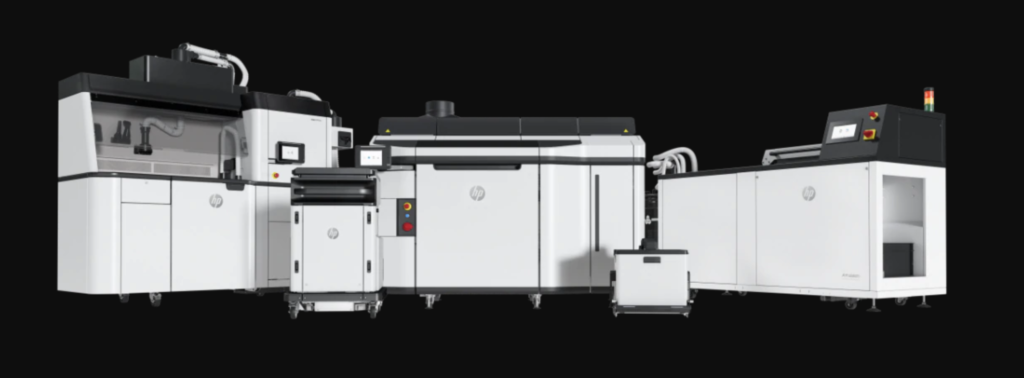
The HP Multi Jet Fusion (MJF) ecosystem. Image courtesy of HP.
On the whole, we can see systems evolve from boxes with lots of options toward becoming integrated manufacturing units. Tighter integration with quality control (QC) or tracking for aviation and orthopedics is driving excellence and higher performance.
Recommendations
With many players chasing medical applications and the aviation market, there is still a lot of potential present in other markets. Tightly controlled value propositions for automotive, where a partnership with a machine vendor and materials company would develop a suitable offering, could end up being crowbars to open new markets. But, the market is still filled with big-ticket items. It is costly to get a sintering system, get it qualified, up, and running.
Services are really key here, as they drive adoption by being the first port of call for companies to try the technology. If businesses scale, they often then do it by themselves and take additive in-house. To keep services from losing these businesses, they should have a “Scaling Roadmap” and offer services to help customers grow. From the first prototype, it should be clear that the service can provide all of the qualification and manufacturing expertise to get this part made in the millions of exemplars. This way, companies can be taken on a path towards greater autonomy through a broad suite of offerings from services. Then, as a final step, it could make sense to do 20% of their production in order for them to maintain redundancy, for example. India’s largest 3D printing service, Objectify, is an example of a company offering customers many value-added services and a path to a captive service offering.
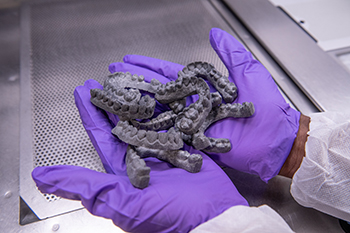
HP dental molds for Smile Direct
Integration and integration partners are still key. It is difficult to learn and master sintering for actual production and precious few firms exist to get you up to speed. Lack of training and available personnel is also a huge drag on this market. If firms want to expand, new partners and newly trained 3D printing staff must be found or they will drag on growth.
New entrants often don’t have any idea of part costs, especially if they would produce these parts themselves. Keeping this information hazy retards industry growth. Calculation tools are essential for exposing and educating customers so that they can advocate for implementing the technology.
Critical Issues
Exposure to traditional service bureau companies is a risk because their cost structures could be significantly higher than newer companies that use desktop 3D printers or newer, lower-cost machines.
Fat margins on materials may seem like a great idea, but overpriced materials are holding back the market significantly.
The investment needed to get started in sintering is too high. The prevalence of lower-cost material extrusion machines means that this will be the technology most understood and perhaps the technology of choice but definitely, the first technology tried for industrialization.
It is not clear to many new market participants why they would use sintering or why they would turn to such an expensive seeming technology with so few materials. The business case for sintering is not understood by many in the market.
Sintering is a little-understood and little-cared-for technology by investors with few expressing an interest in funding it.
Recommendation for Competition
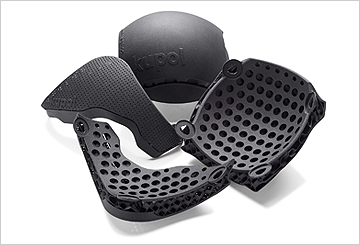
Kupol helmet parts made with HP MJF
There are many verticals and industries that are very poorly understood and underserved in sintering. If entering this market as a start-up, the lowest cost and perhaps even the most interesting path would be to combine a mass customization technology, such as Twikit, with a service and some software to create mass-customized products. Unique-fit handlebars, camera grips, steering wheels, glasses, and the like are a much more tantalizing opportunity than trying to take the fight to EOS and HP. Let them do the heavy lifting and make money deploying the technology.
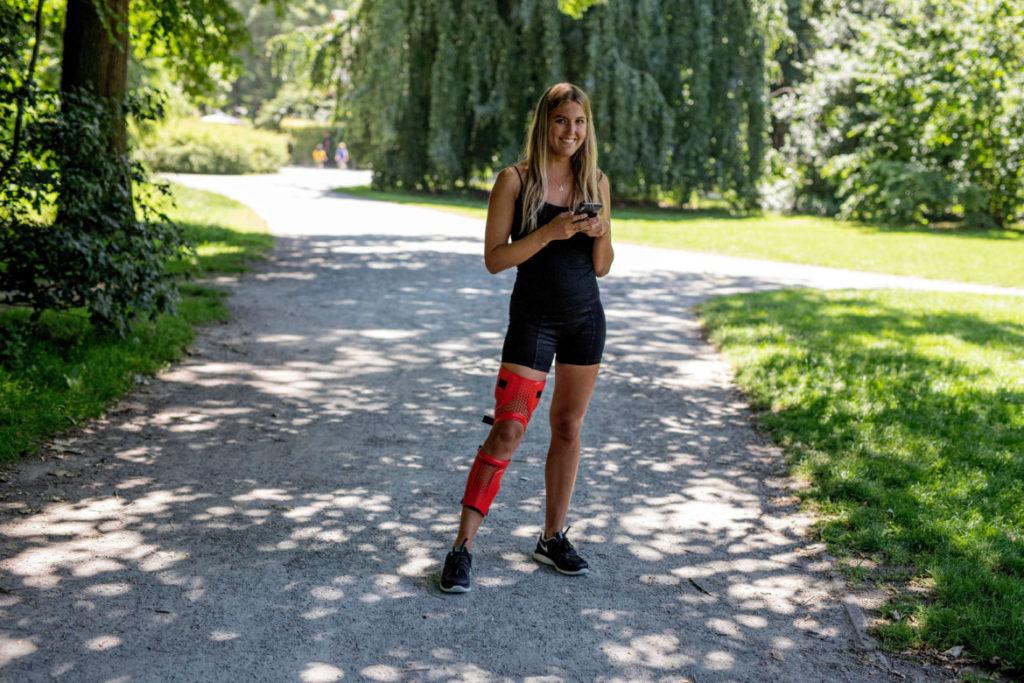
A Twikit custom knee brace
Having said that, there could be an opportunity in the 10,000-50,000 unit range especially if one could engineer automated depowdering and sieving. A lot of focus has been on inexpensive desktop systems, but a mid-range affordable, highly-automated printer for machine shops and corporate prototyping locations makes a lot more sense in my opinion.

Diagram of Sinterit’s Powder Handling Station
2021 Outlook
The general industrial outlook worldwide is currently hazier than the smog-filled skies of mid-level industrial cities in China. Stocks are soaring but output lingers and many economies are in recession. The global economy is a strange brew indeed. More so than FDM and SLA, growth in SLS is dependent on large companies and large investments with long run up times. This will mean that the current mess will effect it disproportionately. Slower service business revenue already has impacted powder revenues significantly as well. At the same time renewed interest in medical and supply chain resilience should bring in customers towards the end of the year.
Subscribe to Our Email Newsletter
Stay up-to-date on all the latest news from the 3D printing industry and receive information and offers from third party vendors.
You May Also Like
3D Printing Unpeeled: New Arkema Material for HP, Saddle and Macro MEMS
A new Arkema material for MJF is said to reduce costs per part by up to 25% and have an 85% reusability ratio. HP 3D HR PA 12 S has been...
3D Printing News Briefs, January 20, 2024: FDM, LPBF, Underwater 3D Printer, Racing, & More
We’re starting off with a process certification in today’s 3D Printing News Briefs, and then moving on to research about solute trapping, laser powder bed fusion, and then moving on...
3D Printing Webinar and Event Roundup: December 3, 2023
We’ve got plenty of events and webinars coming up for you this week! Quickparts is having a Manufacturing Roadshow, America Makes is holding a Member Town Hall, Stratafest makes two...
Formnext 2023 Day Three: Slam Dunk
I’m high—high on trade show. I’ve met numerous new faces and reconnected with old friends, creating an absolutely wonderful atmosphere. The excitement is palpable over several emerging developments. The high...































